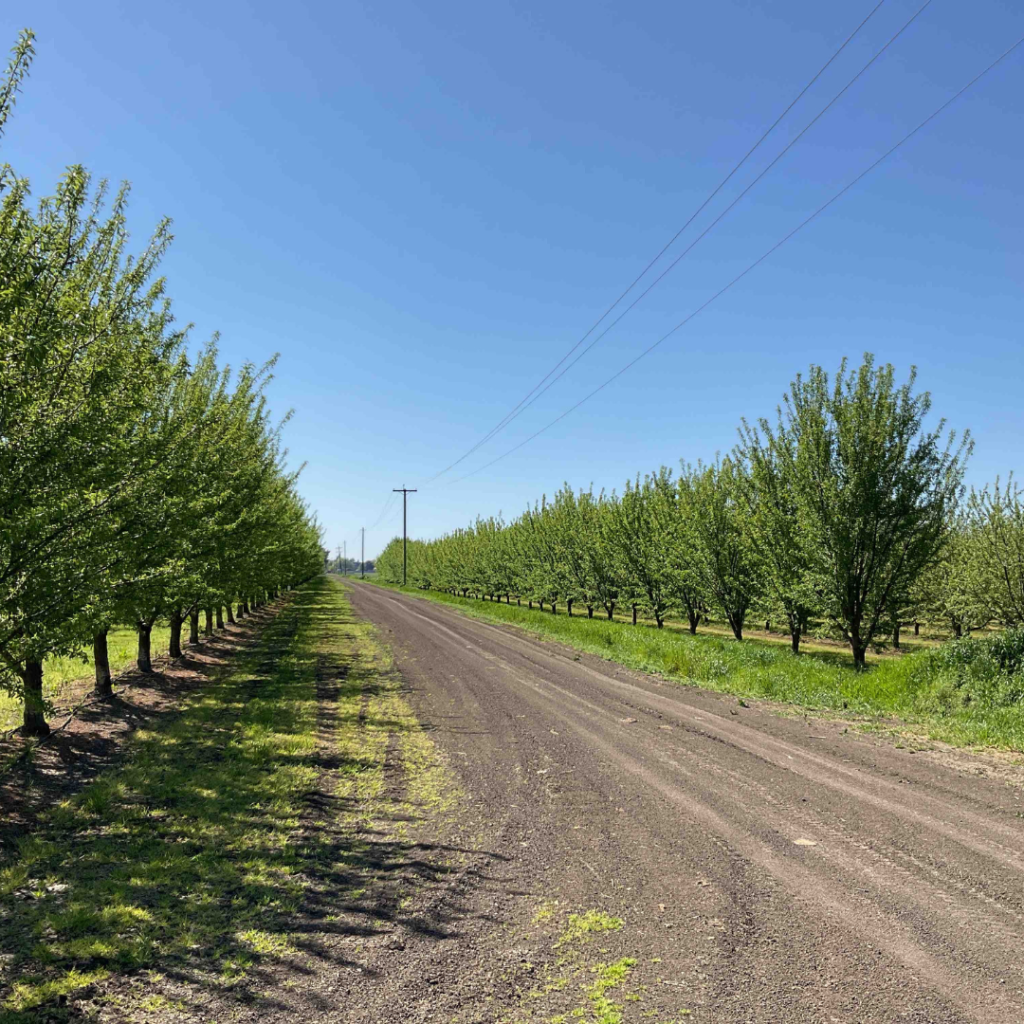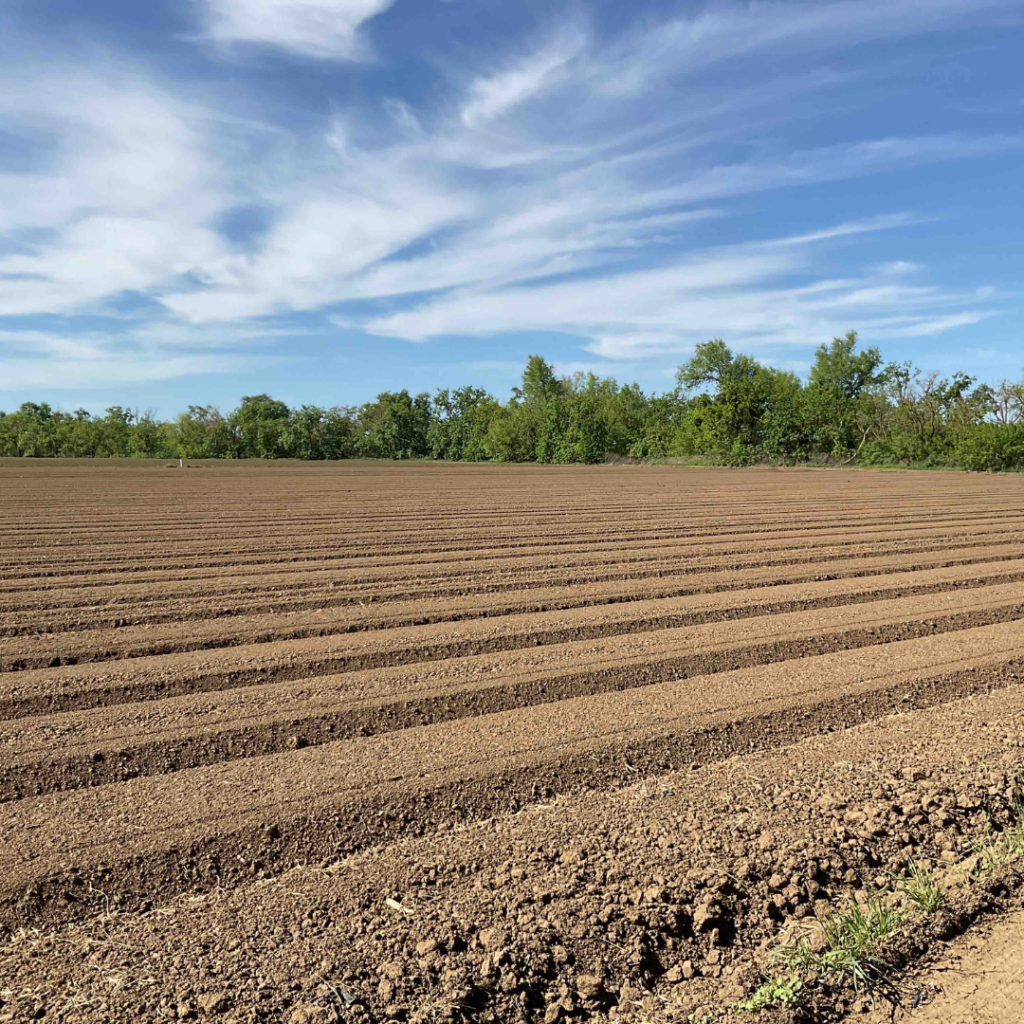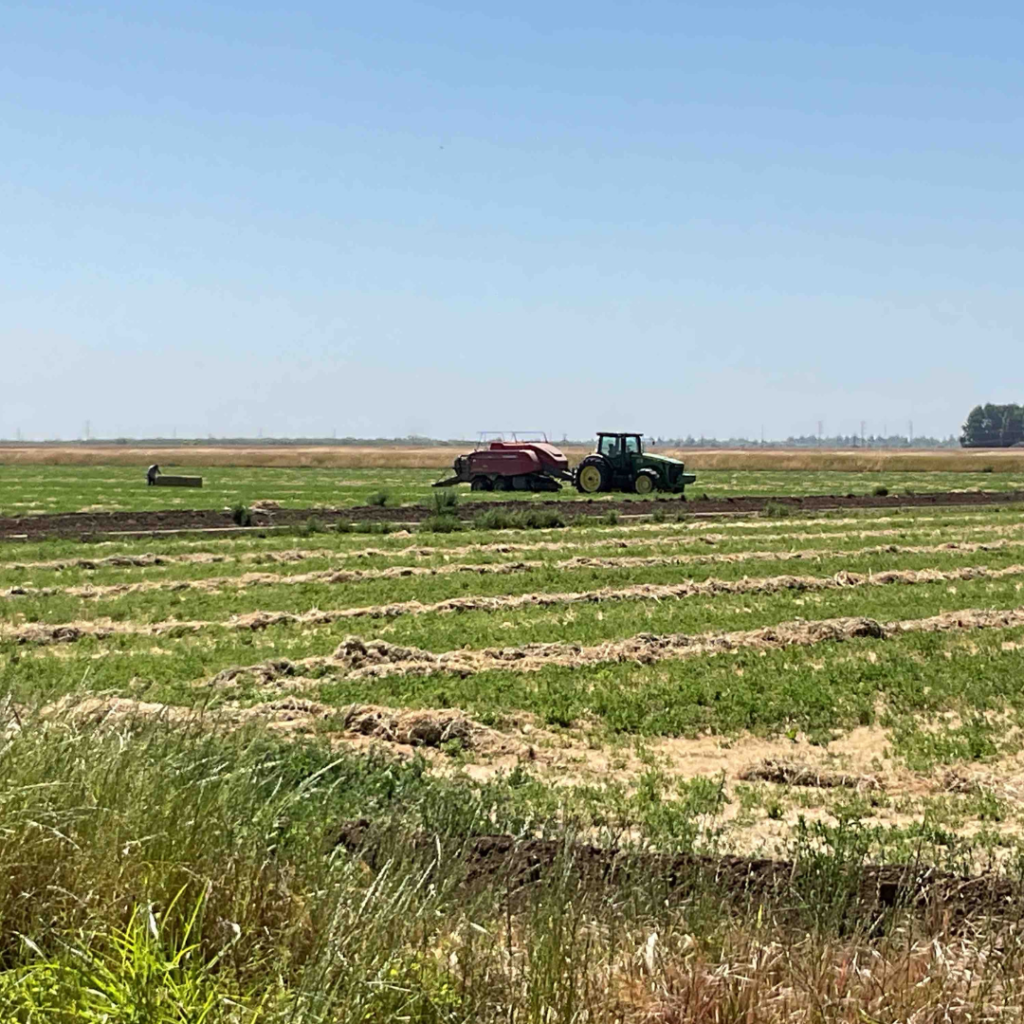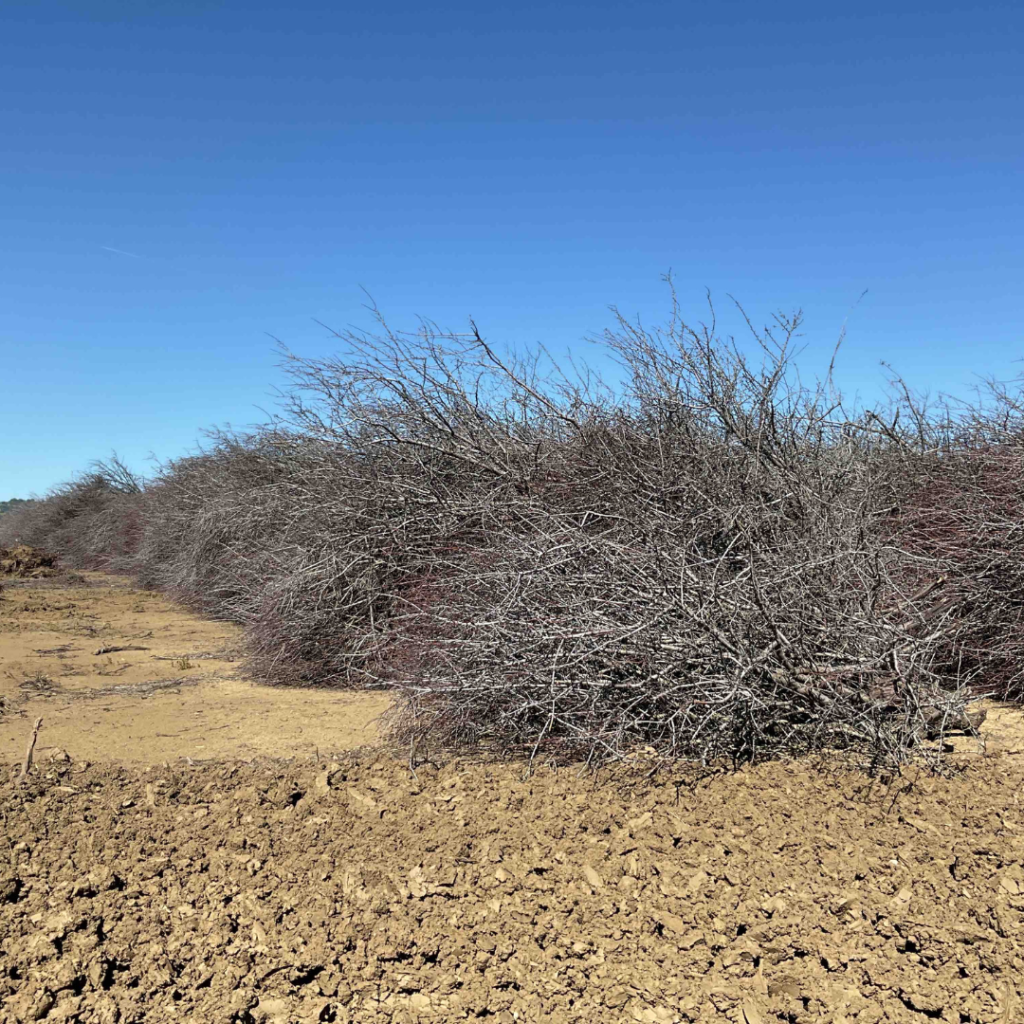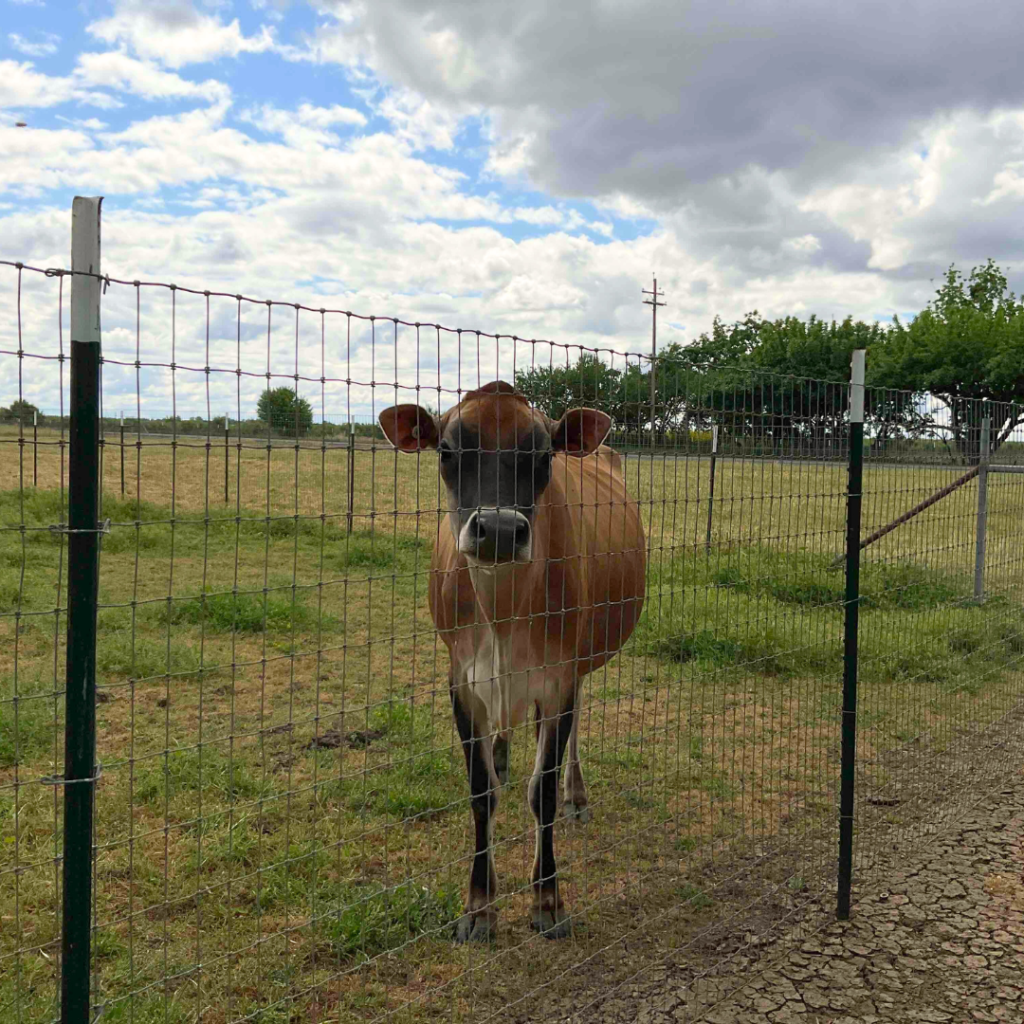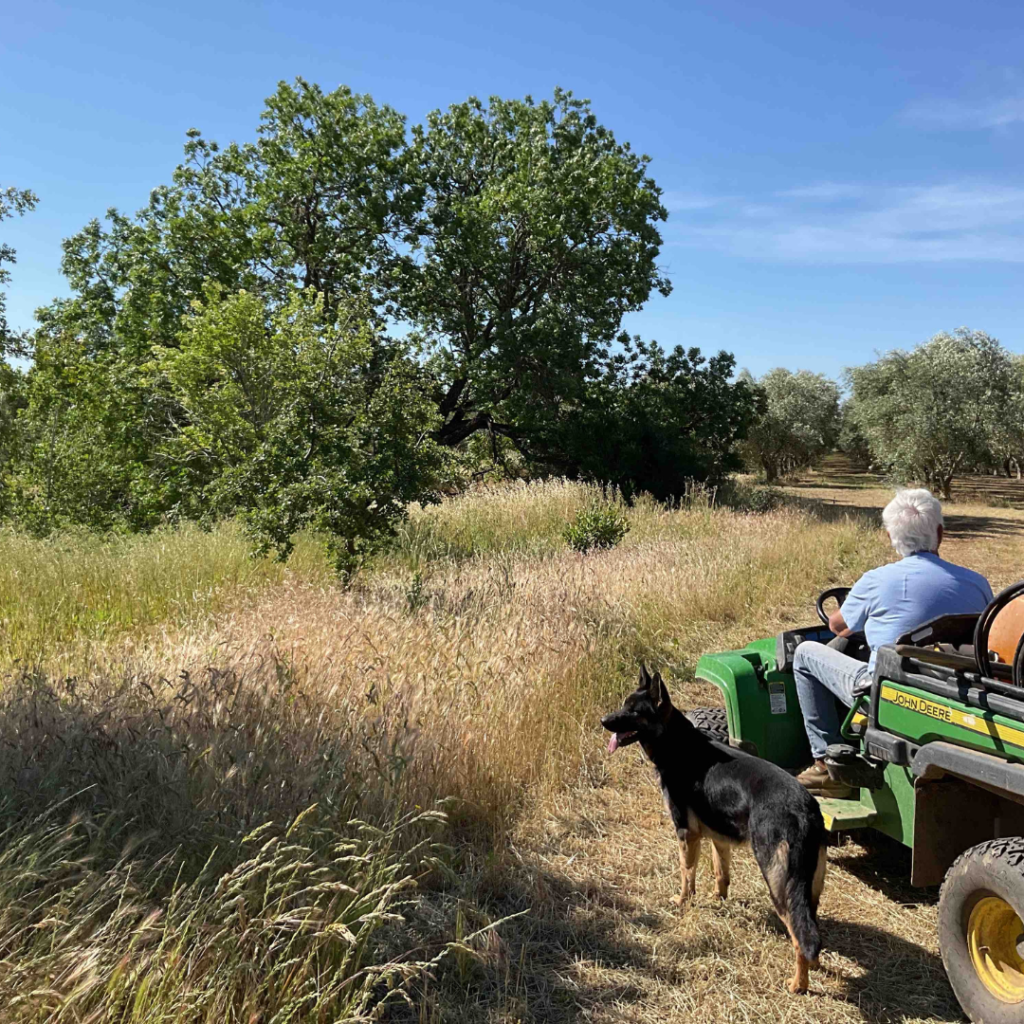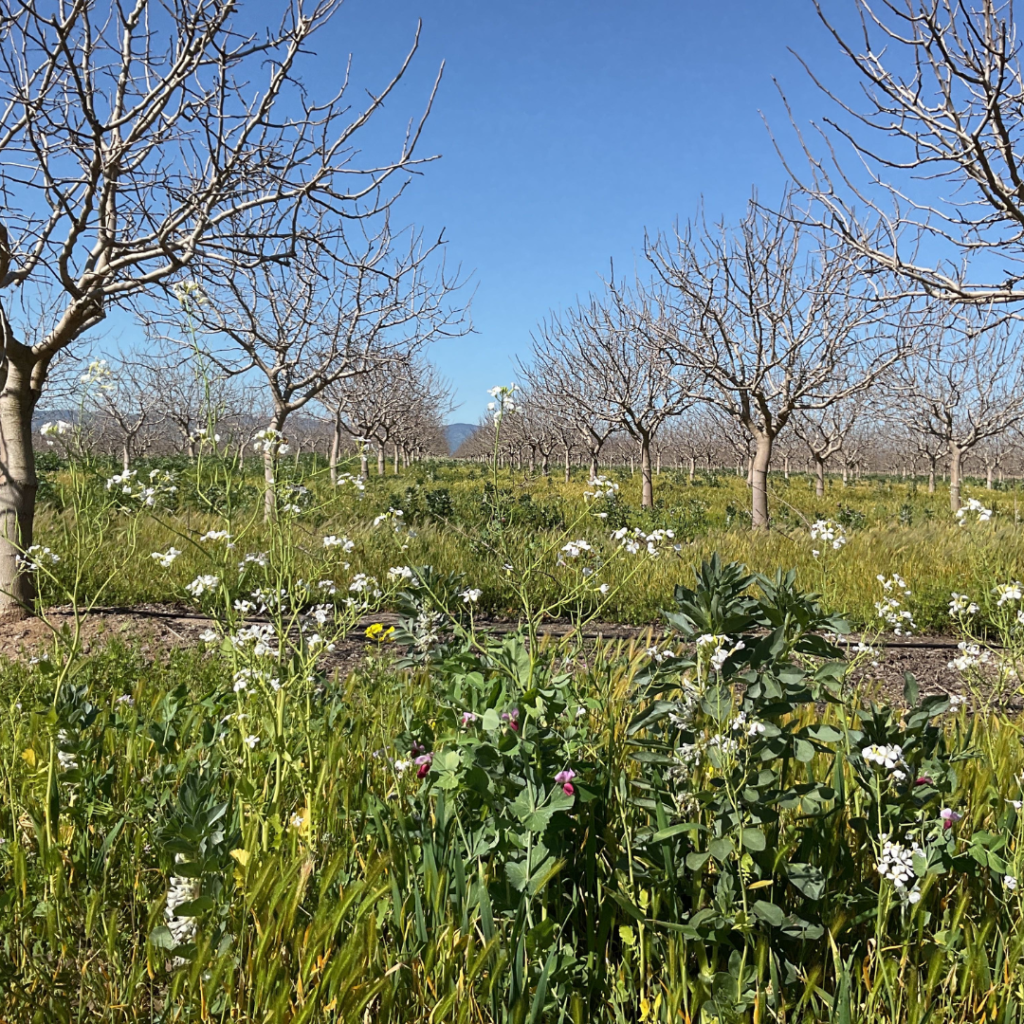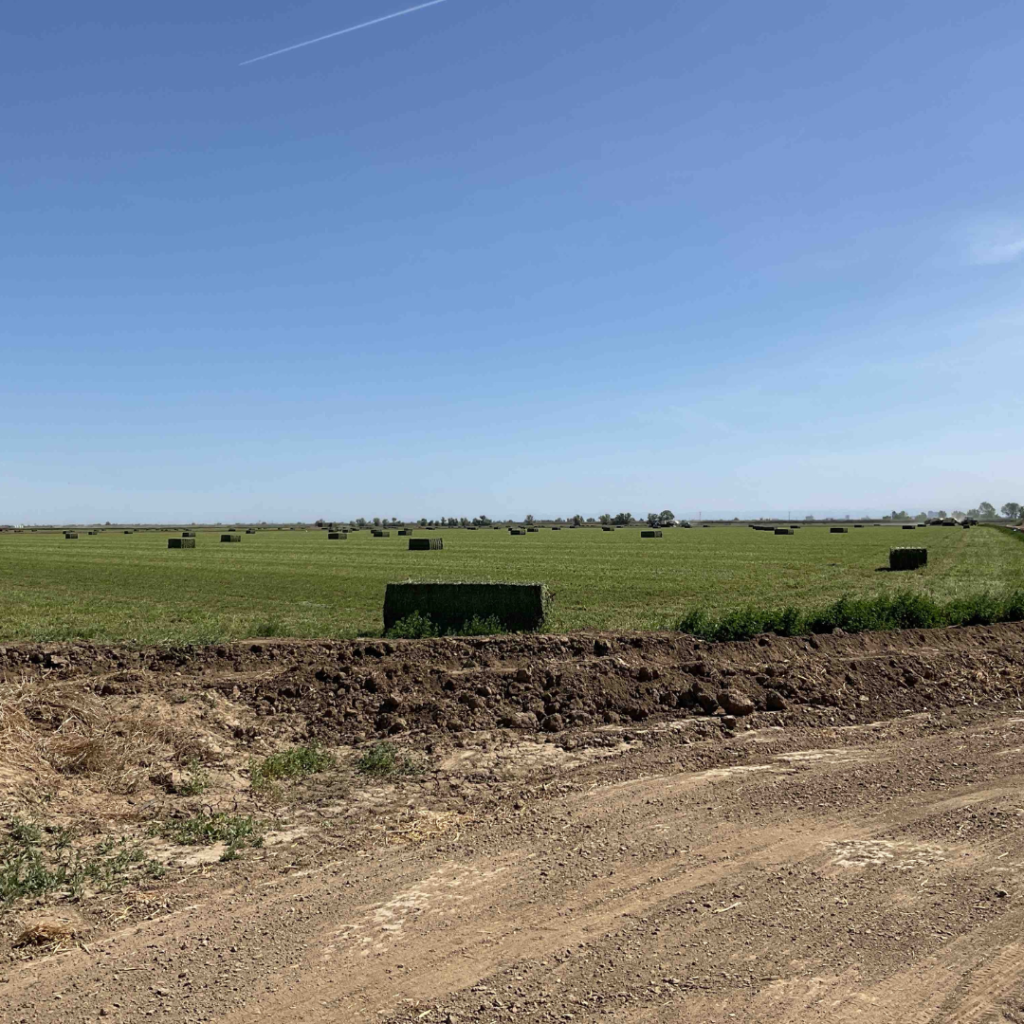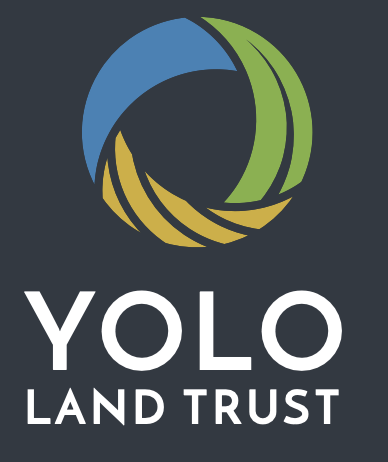March 21, 2024, kicked-off the first monitoring farm visit for our Land Stewardship Director, Liz Heckles. It was a perfect spring day, and the cover crop was in full bloom at Conservation Easement #35 located west of Woodland. During the spring and summer months, Liz travels across Yolo County to conduct annual monitoring of YLT’s 13,000+ acres of conserved farmland.
Monitoring is a very important aspect of YLT’s operations. We spend much of our time working with landowners to conserve and protect their farmland, but once the land is protected it is our responsibility to confirm that farming activity continues year after year. “Monitoring is one facet of land stewardship that allows both the landowner and the easement holder (YLT) an opportunity to confirm that the tenets of the agricultural conservation easement are being upheld,” Liz explains. “It serves as an assurance that over time, as farming practices and agricultural uses evolve, that the easement’s purpose, which is generally to continue to farm, is maintained.”
Liz will visit 78 farms monitoring the farming activity and land-use to ensure that the conservation values of the agricultural conservation easement on the property are being adhered to. “Monitoring visits vary from farm to farm based on acreage and complexity of the easement. Some easement properties can be assessed in an hour, others may require a few hours or a day to get around and really inspect.”
Donations made to YLT support our monitoring efforts – the technology needed, the staff time, the reporting to funders, and the documenting for YLT’s historical records. By monitoring our properties YLT stays in good standing with federal funding agencies, which allows YLT to continue to partner with these agencies to conserve farmland in the future. As we add more conserved farmland the time and resources required for monitoring visits increases.
Monitoring YLT Conserved Farmland with Liz Heckles
What are you doing when monitoring? What are you looking for?
I visit each farm and walk or drive around the property documenting any changes based on previous year visit information, this includes taking photos from existing photo points on the property. I’m always referring to the terms of the individual easement and the state of the property that was documented when the easement was established and looking for changes to the landscape and structural development.
How long does it take to monitor one farm?
There are a lot of variables that determine how long it takes to monitor a farm – the complexity of the easement deed and the easement area, the size of the parcel, the amount of site features, the accessibility of the property, and of course, the ability to travel around and into the parcel. Some farms can be assessed in an hour, some require more time, up to five hours, depending on conditions.
What are you most excited about for this year’s monitoring?
I am always excited to see both the amount of continuity and the amount of change among the farms in our conservation easement portfolio. Over the past few years, we have seen a shift in orchard ground – with walnuts and older almonds coming out and pistachios being planted. There are always innovations in irrigation that appear from year to year, as well as the implementation of healthy soils practices – farms that are cover cropping, planting native hedgerows, mulching, or composting. It’s satisfying to go back to a farm whose land has been in easement for over 25 years and see the same view – often only improved with the innovative farming practices visualized by Yolo County producers.
How do you decide what order to visit farms in? Does it have anything to do with planting/harvest schedule?
There are several parameters that I use to set my schedule. Obviously, there are reporting deadlines to funding agencies that must be met, but I also like to vary the timing of visits from year to year to see different stages of the farming landscape and different farm activities. I also try to avoid times when critical activities for certain properties may be occurring, for example – planting of crops at our row crop farms, blossom or harvest for our orchard properties and cattle movement on our pasture lands.
One of my personal goals in monitoring is to tread lightly and create the least disruption while I’m out visiting. I’m really trying to make sure I’m not getting in the way of any farming activities that might be going on while I’m out surveying.
What do you enjoy most about monitoring?
I love checking in on all our easement properties and seeing the variety in commodities, the diversity in farming techniques and the continuity year after year of food production. Farming is such a vital part of Yolo County, and something that is increasingly more unique in this region, and I hope our work at YLT allows it to continue and thrive.
Also, I’m looking forward to meeting face-to-face with the landowners and farmers. I invite every owner to show me their farm and I hope more will be able to do that this year. I want to personally thank each one for their commitment to keep farming in Yolo County.

